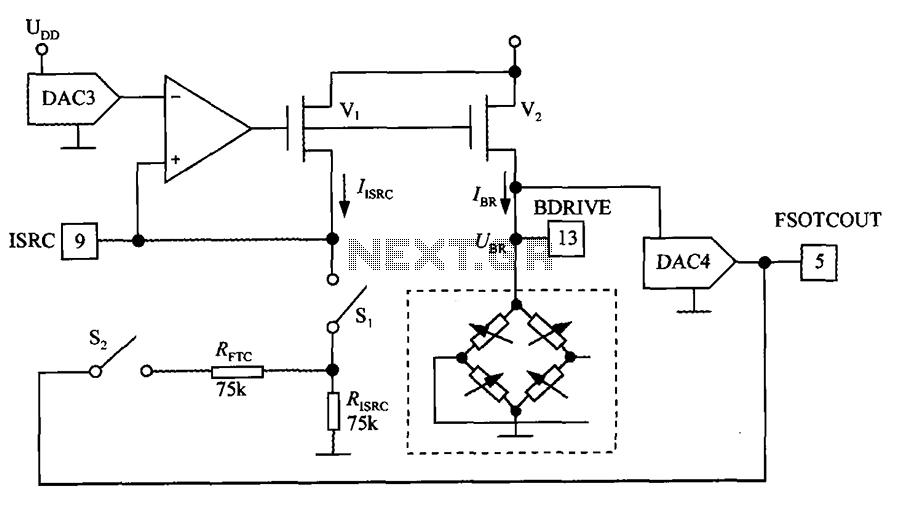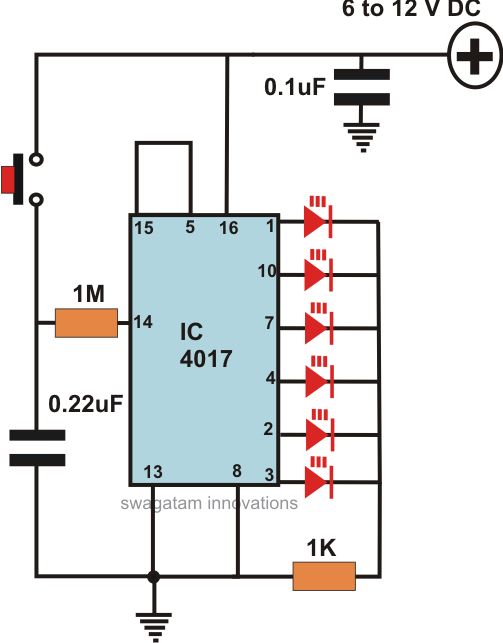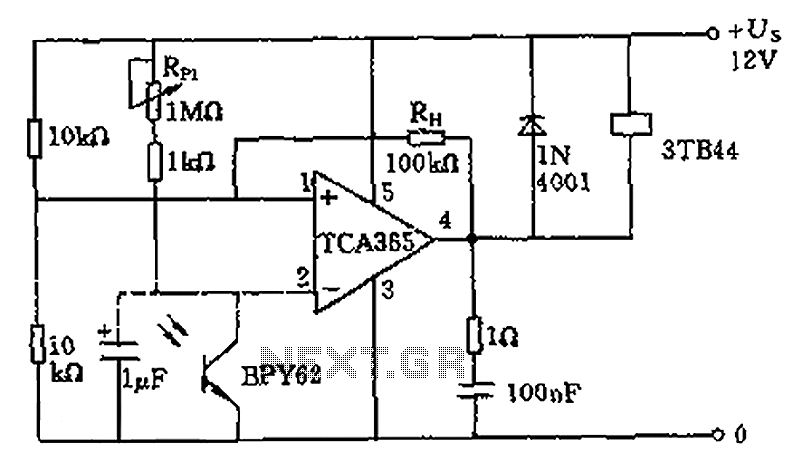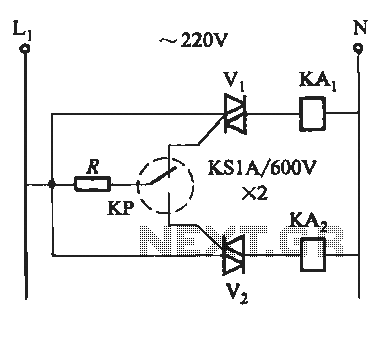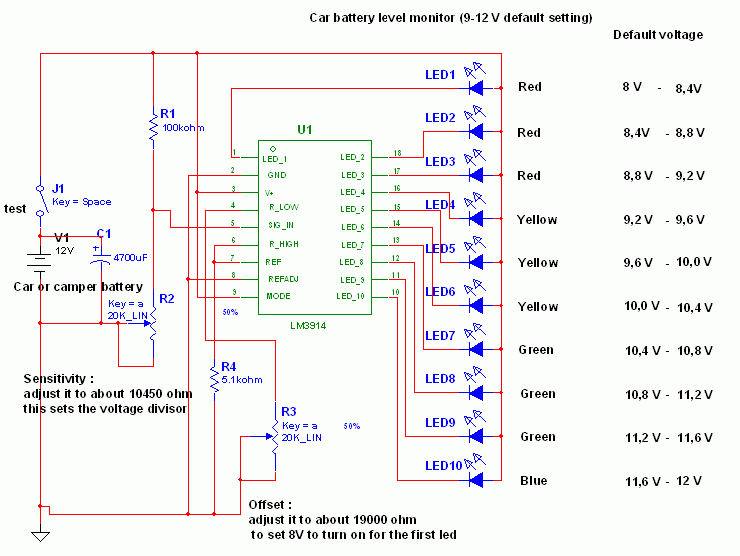
birdie doorbell circuit

This is a circuit design for a doorbell that produces a bird-like sound. The circuit is controlled by an NPN transistor. The operation of the circuit begins when P1 is set to an experimental value, starting with approximately 220 Ohms, which can be adjusted to meet specific requirements. The transistor used is a general-purpose type, and any PNP variant should suffice. L1 is a bell transformer, which is typically already available in households. Alternatively, a 9-volt battery or wall adapter can be connected to points A and B (A=+). The diode (D1) serves to protect the circuit from accidental polarity reversal and is optional but necessary as a rectifier when using the bell transformer. The transistor T1 is a general-purpose PNP transistor, and any suitable type will work. L2 is sourced from an old AM transistor radio, resembling a miniature transformer and usually colored red or green. Experimentation with different transformers is necessary, as the sound output can vary based on their specifications. The loudspeaker should be an 8 Ohm type with a power rating greater than 200 milliwatts; a 2-watt speaker is recommended, but any speaker rated above 0.2 watts will suffice.
This doorbell circuit utilizes a basic configuration to generate sound through a loudspeaker, with the primary control mechanism being an NPN transistor. The design is straightforward, allowing for flexibility in component selection and adjustments based on user preferences. The starting point for the resistor P1 at 220 Ohms provides a baseline for tuning the circuit for optimal sound output.
The bell transformer (L1) plays a crucial role in the circuit, as it converts the low voltage from the power source to a higher voltage suitable for sound generation. In cases where a bell transformer is not available, a 9-volt battery or wall adapter can be employed, ensuring that the circuit remains functional. The inclusion of diode D1 is vital for safeguarding the circuit against incorrect polarity connections, which could potentially damage the components.
The use of a general-purpose PNP transistor (T1) allows for versatility in component selection, as various PNP transistors can be utilized without significant impact on circuit performance. The second transformer (L2) sourced from an AM radio contributes to the sound modulation, and experimentation with different transformers is encouraged to achieve the desired audio effect.
The loudspeaker selection is also important; an 8 Ohm speaker rated for at least 200 milliwatts ensures adequate sound output without distortion. A 2-watt speaker is a suitable choice, providing ample power handling for the circuit's requirements. Overall, this doorbell circuit design allows for customization and experimentation, making it an engaging project for electronics enthusiasts.This is a design circuit for a doorbell. This circuit can produces a sound like bird sound. This circuit controlled by transistor NPN. This is the figure of the circuit. The operation of the circuit is beginning when P1 is of experimental value. Start with 220 Ohms or so and modify to suit your needs. The transistor is a general purpose kind and i s not critical, almost any PNP type will work. L1 is a bell-transformer which is usually already present in the house. If you wish, you could use a battery instead of the bell transformer. Just hookup a 9-volt battery (or wall adapter)to points `A` and `B` (A=+) the diode (D1) is to protect the circuit from accidental polarity reversal and is optional, but required as a rectifier for use with the bell transformer. The transistor T1 is a General Purpose PNP transistor and probably anything will work. L2 comes out of an old am transistor radio. They look like miniature transformers and are usually colored red or green. You have to fiddle with different transformers as the sound can vary depending on the value. The loudspeaker is a 8 Ohm type and must be larger than 200milli-Watt. I used a 2Watt type, but anything over 0. 2W will do. 🔗 External reference
This doorbell circuit utilizes a basic configuration to generate sound through a loudspeaker, with the primary control mechanism being an NPN transistor. The design is straightforward, allowing for flexibility in component selection and adjustments based on user preferences. The starting point for the resistor P1 at 220 Ohms provides a baseline for tuning the circuit for optimal sound output.
The bell transformer (L1) plays a crucial role in the circuit, as it converts the low voltage from the power source to a higher voltage suitable for sound generation. In cases where a bell transformer is not available, a 9-volt battery or wall adapter can be employed, ensuring that the circuit remains functional. The inclusion of diode D1 is vital for safeguarding the circuit against incorrect polarity connections, which could potentially damage the components.
The use of a general-purpose PNP transistor (T1) allows for versatility in component selection, as various PNP transistors can be utilized without significant impact on circuit performance. The second transformer (L2) sourced from an AM radio contributes to the sound modulation, and experimentation with different transformers is encouraged to achieve the desired audio effect.
The loudspeaker selection is also important; an 8 Ohm speaker rated for at least 200 milliwatts ensures adequate sound output without distortion. A 2-watt speaker is a suitable choice, providing ample power handling for the circuit's requirements. Overall, this doorbell circuit design allows for customization and experimentation, making it an engaging project for electronics enthusiasts.This is a design circuit for a doorbell. This circuit can produces a sound like bird sound. This circuit controlled by transistor NPN. This is the figure of the circuit. The operation of the circuit is beginning when P1 is of experimental value. Start with 220 Ohms or so and modify to suit your needs. The transistor is a general purpose kind and i s not critical, almost any PNP type will work. L1 is a bell-transformer which is usually already present in the house. If you wish, you could use a battery instead of the bell transformer. Just hookup a 9-volt battery (or wall adapter)to points `A` and `B` (A=+) the diode (D1) is to protect the circuit from accidental polarity reversal and is optional, but required as a rectifier for use with the bell transformer. The transistor T1 is a General Purpose PNP transistor and probably anything will work. L2 comes out of an old am transistor radio. They look like miniature transformers and are usually colored red or green. You have to fiddle with different transformers as the sound can vary depending on the value. The loudspeaker is a 8 Ohm type and must be larger than 200milli-Watt. I used a 2Watt type, but anything over 0. 2W will do. 🔗 External reference

